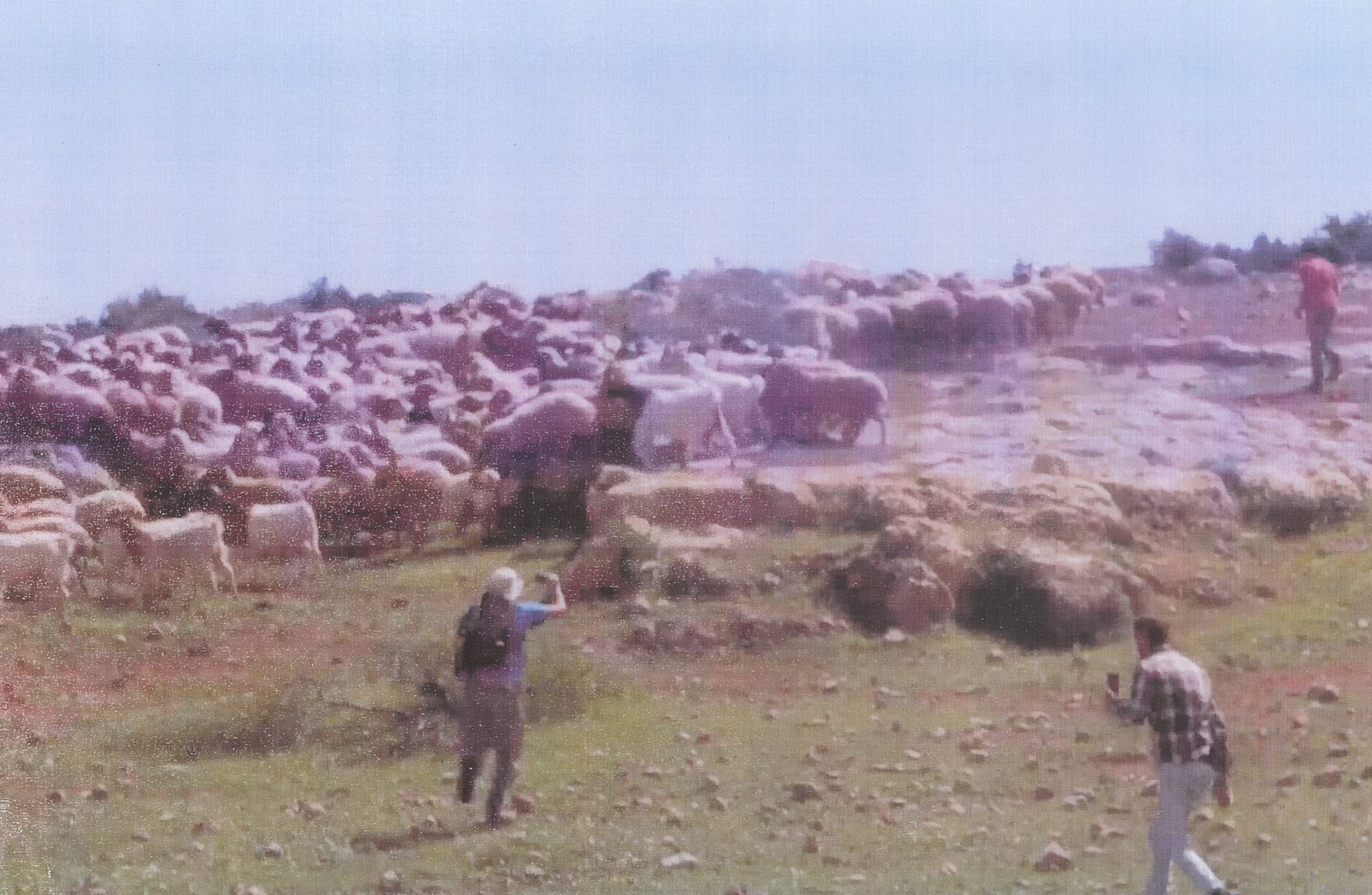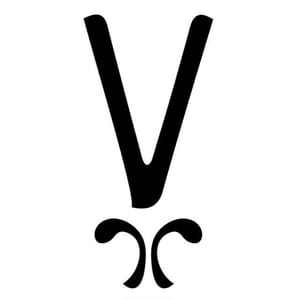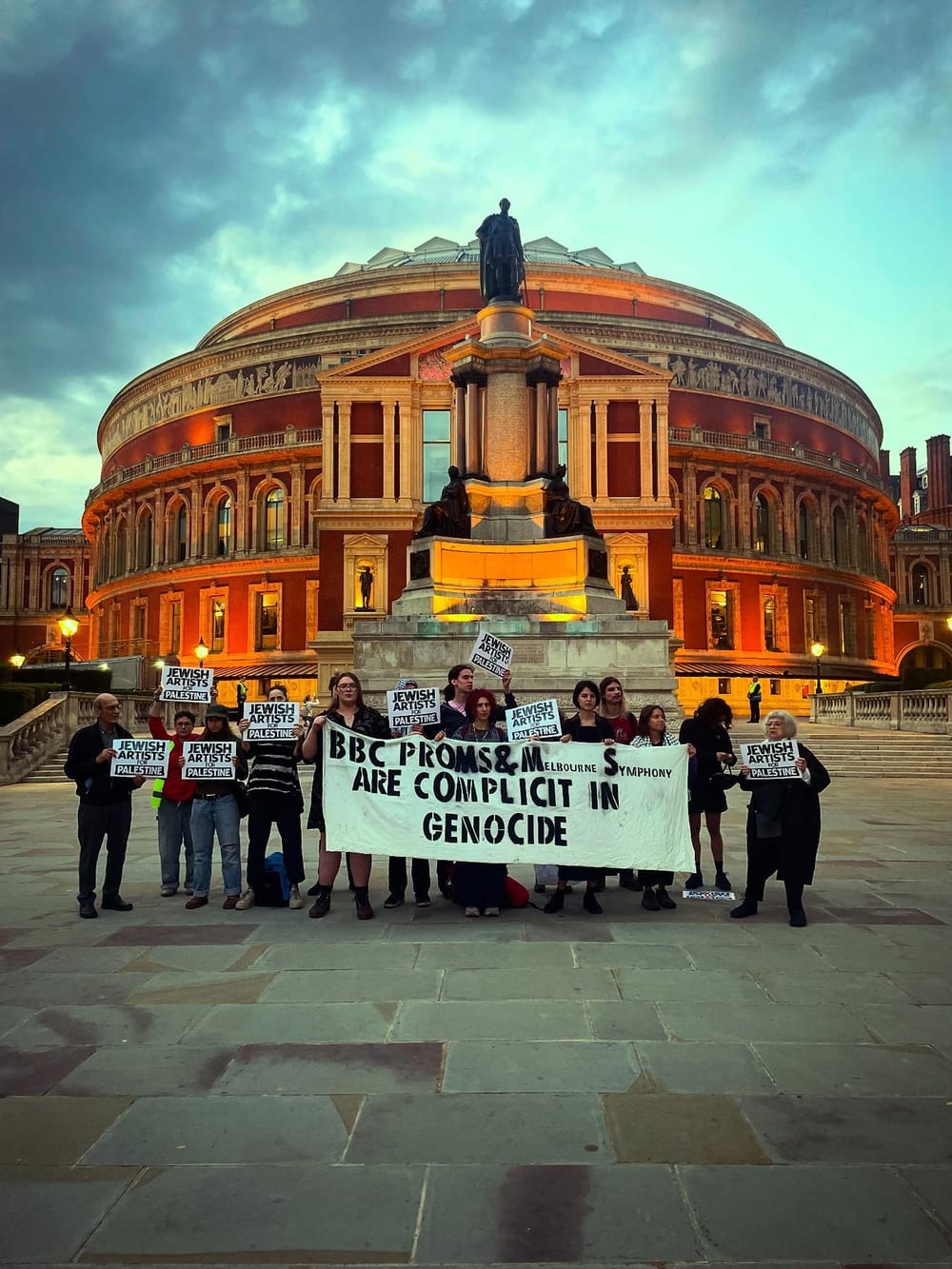Slow violence in action
“I was terrified, thinking he meant guns,” said Lazarus. “After a brief panic, the veteran clarified that he meant a shoot-off with cameras – us filming the settlers while they film us.”

FOA.001 is a photography book that emerged out of a video installation by British photographer Jacob Lazarus, who has been documenting settler violence in the occupied West Bank for the past two years as a member of the Jordan Valley Activists. This group of international volunteers make themselves present virtually every day in the Jordan Valley at the request of Palestinian herders, who face continual threats of displacement and physical violence from Jewish settlers.
The photographs – or more accurately screenshots – chosen by attendees of Lazarus’s recent video installation, Frames of Annexation, shown at the Peckham 24 festival – show the daily trials of life and regular outbursts of violence endured by Palestinians living in Israeli-controlled Area C of the West Bank. Lazarus explains that coming face to face with this violence while visiting several Palestinian communities besieged by settlers prompted him to join the Jordan Valley Activists. “I realised the importance of documentation to deter and de-escalate settler violence and recognised the power this documentation holds in front of the international community,” he said.
The book is subtitled “Snapshots of Slow Violence”, in reference to a term coined by literary theorist and environmentalist Rob Nixon, to describe how “time can become a kind of camouflage for long-term damage to society’s most vulnerable”, particularly in the context of environmental destruction in the global south.
This resonates with Lazarus’s experiences in the Jordan Valley. “About 80% of the time is spent talking with shepherds and other activists, reading, or simply being idle. However, the other 20% is filled with horrific moments – settlers hurling stones, driving into Palestinian herds on their ATVs, and holding guns up to shepherds we are accompanying, threatening to shoot.”
Lazarus chose to exhibit unedited film shot by himself and other activists to “allow the viewer to slowly consume the reality on the ground in the Jordan Valley”, as a counterpoint to fleeting images of settler violence on social media, which can only ever be a snapshot of reality.
Though he isn’t sure the book achieves this same languid pace, I disagree. The reader is forced to linger over the often-low-resolution images – screenshots of videos selected by attendees of the exhibition – trying to discern their meaning.
In doing this, I found myself taking in the beauty of the landscape, and the many images that do not depict violence or confrontation, as well as identifying clues of events happening or about to happen in the screenshots. In the absence of labelling, it is not always easy to distinguish between Palestinian farmers, Israeli settlers, and (often Jewish) solidarity activists. I was made to tune into the ways that visual symbols of Jewishness can represent terror for Palestinians, with kippot (skullcaps) and tzitzit (Jewish ritual fringes) helping me to identify settlers in the images.
Another striking theme of these screenshots is the presence of mobile phones, almost always filming. Lazarus emphasises the significance of visual documentation for both the activists and the settlers they encounter, through an anecdote from the start of his time in the West Bank.
Driving with a veteran activist and another new recruit, he recalls the seasoned activist saying “be ready for a shoot-off.”
“I was terrified, thinking he meant guns,” said Lazarus. “After a brief panic, the veteran clarified that he meant a shoot-off with cameras – us filming the settlers while they film us.”
In these images, phones function much like guns – each side training the sight on their enemy with an ever-present threat of violence in the air. In the activists’ hands, says Lazarus, “The phone becomes a weapon, crucial for documenting crimes and tracking settler activity, symbolising the presence of international eyes and a semblance of accountability.”
That is not to say the photographs are without a more palpable violence. Images of heavily-armed soldiers are peppered throughout the text, sometimes attempting to block the camera from documenting their own participation in settler violence. Lazarus says militarisation has worsened since 7 October, with settler reservists called up as army reinforcements. Now donning uniforms and guns, they have been able to escalate their assaults on Palestinians.
There are occasional but impactful glimpses of the worst impacts of settler violence in the book: a building engulfed in flames, a dead goat. These represent not only the callousness of settler violence, but also the failure of activists to ultimately prevent the slow erosion of Palestinian life in the Jordan Valley. However, the simmering dread palpable in many images even in the absence of explosive violence is what will remain with me.
The book does have its limitations. The decision to allow exhibition attendees to choose the images may have helped to deepen their engagement with the material, but some are so blurry that even careful study will not illuminate their context.
Lazarus also described to me how settlers crush Palestinian shepherds’ livestock with ATVs, and throw rocks at Palestinians and solidarity activists. While the inclusion of this violence could feel prurient, its exclusion from both the imagery in the book and its surrounding essays arguably paints an incomplete picture.
The pictures are bookended by an introduction from Lazarus, which adds enough context to instruct the reader how to view the images, without offering so much explanation as to preclude careful reading. There is also an essay from Dalia Al-Dujaili, an editor at the British Journal of Photography, which promotes meditation on the “sacred intimacy” between Palestinian pastoralists and the land from which they are being displaced.
Al-Dujaili’s writing is beautiful and thoughtful, but, as Lazarus admits, this book suffers from a lack of direct contributions from Palestinians, something he hopes to correct in subsequent instalments of the project. He describes this book as “the first iteration of a collaboration with the Jordan Valley Activists’ archive”, and says “the vision for the next iteration is to bring in Palestinian voices, hopefully collaborating with artists and poets that I hope will rectify the blindspots that I believe this iteration had.”
Still, as an educational tool that encourages the kind of thoughtful engagement that is difficult to achieve through viewing more transient social media videos, this book is a success, and the beginning of an illuminating project.▼
FOA.001 is available to purchase from Zone 6 Press or as a free .pdf on Lazarus’ website.
Sasha Baker is a Vashti editor, and freelance investigative journalist and podcast producer.
Author

Sasha Baker is an investigative journalist.
Sign up for The Pickle and New, From Vashti.
Stay up to date with Vashti.



